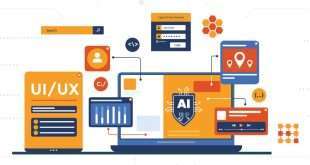In today’s rapidly evolving digital landscape, web accessibility has become a crucial aspect of creating inclusive and user-friendly online experiences. As technology advances, we find ourselves on the cusp of a new frontier that promises to revolutionize web accessibility and user experiences – Augmented Reality (AR) and Virtual Reality (VR).
Understanding Web Accessibility and Its Significance
Web accessibility refers to the design and development of websites and web applications that can be used and accessed by all individuals, including those with disabilities. It ensures that people with visual, auditory, motor, or cognitive impairments can perceive, understand, navigate, and interact with digital content effectively.
The significance of web accessibility cannot be understated. It not only helps businesses comply with legal requirements and accessibility standards but also broadens their reach to a more diverse audience. As the internet plays an increasingly central role in our lives, ensuring an inclusive digital environment becomes a moral imperative.
The Evolution of AR and VR in Accessibility
AR and VR technologies have made significant strides in various fields, from gaming and entertainment to healthcare and education. However, their potential impact on web accessibility has only recently gained attention. These immersive technologies have the power to break barriers and open up new possibilities for people with disabilities.
AR for Enhanced User Assistance
AR overlays virtual content onto the real world, providing users with valuable information and assistance. For individuals with visual impairments, AR can enrich their surroundings by describing objects, navigation routes, and other relevant details through audio cues. This technology empowers them to explore and interact with the environment independently.
VR for Empathetic User Experiences
VR, on the other hand, offers a simulated experience that can be especially valuable for those with mobility challenges. For instance, people who cannot physically visit certain locations can virtually explore them, attend events, or participate in meetings and social gatherings. VR fosters empathy and understanding by allowing users to walk in the shoes of others.
Addressing Accessibility Challenges in AR and VR
While AR and VR hold tremendous potential for web accessibility, there are challenges to overcome in their implementation to ensure inclusivity for all users.
Navigational Accessibility
AR and VR environments require well-designed navigation systems that cater to users with varying abilities. Clear spatial audio cues, haptic feedback, and user-friendly gestures are essential components to make interactions intuitive and barrier-free.
Visual and Auditory Impairments
To be truly inclusive, AR and VR experiences must accommodate individuals with visual and auditory impairments. Providing alternative text descriptions for virtual elements and ensuring captioning for audio content are necessary steps towards creating accessible immersive experiences.
HTML Accessibility for AR and VR
A critical foundation for AR and VR web accessibility lies in HTML structures. By adhering to accessibility best practices, developers can make sure that these experiences are perceivable, operable, understandable, and robust for all users.
Some key HTML accessibility considerations for AR and VR include:
- Semantic markup to convey the structure and meaning of content.
- Text alternatives for non-text elements, such as images and interactive elements.
- Keyboard accessibility to facilitate navigation without relying on complex gestures.
- Providing clear and concise instructions for users to interact with virtual elements.
Embracing Inclusivity Through Collaboration
Creating AR and VR experiences that prioritize accessibility requires collaboration between developers, designers, content creators, and individuals with disabilities. By involving users with diverse needs and perspectives throughout the development process, we can ensure that these technologies cater to their requirements effectively.
Final Words
AR and VR are more than just exciting technological innovations; they have the potential to be transformative tools in advancing web accessibility. As we continue to explore the possibilities of these immersive technologies, it is imperative that we keep accessibility at the forefront of our efforts. By doing so, we pave the way for a future where digital experiences truly leave no one behind.
Commonly Asked Questions
1. How can AR benefit individuals with visual impairments?
AR can benefit individuals with visual impairments by providing audio cues and descriptions of their surroundings. This empowers them to navigate and interact with the world independently.
2. What role does VR play in creating empathetic experiences?
VR allows users to virtually experience different scenarios, fostering empathy and understanding. This is especially valuable for individuals who may not have the opportunity to physically participate in certain activities or events.
3. How can developers address navigational challenges in AR and VR experiences?
Developers can address navigational challenges by incorporating clear spatial audio cues, haptic feedback, and user-friendly gestures to make interactions intuitive and accessible.
4. Why is HTML accessibility crucial for AR and VR web experiences?
HTML accessibility ensures that AR and VR experiences are perceivable, operable, understandable, and robust for all users, including those with disabilities.
5. How can we promote inclusivity in AR and VR development?
Promoting inclusivity in AR and VR development involves collaborating with individuals with disabilities throughout the process and incorporating their feedback to meet diverse needs effectively.
 webfily
webfily



